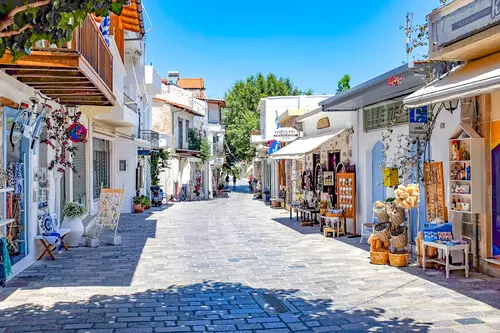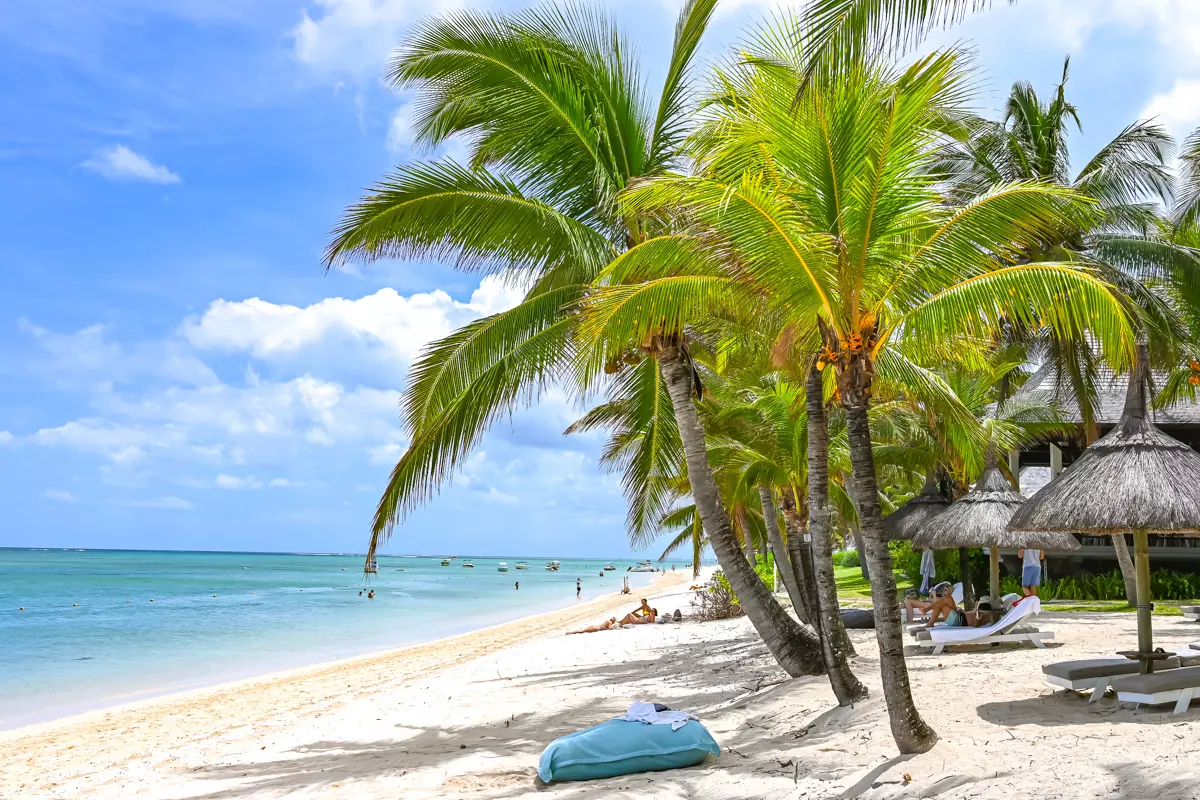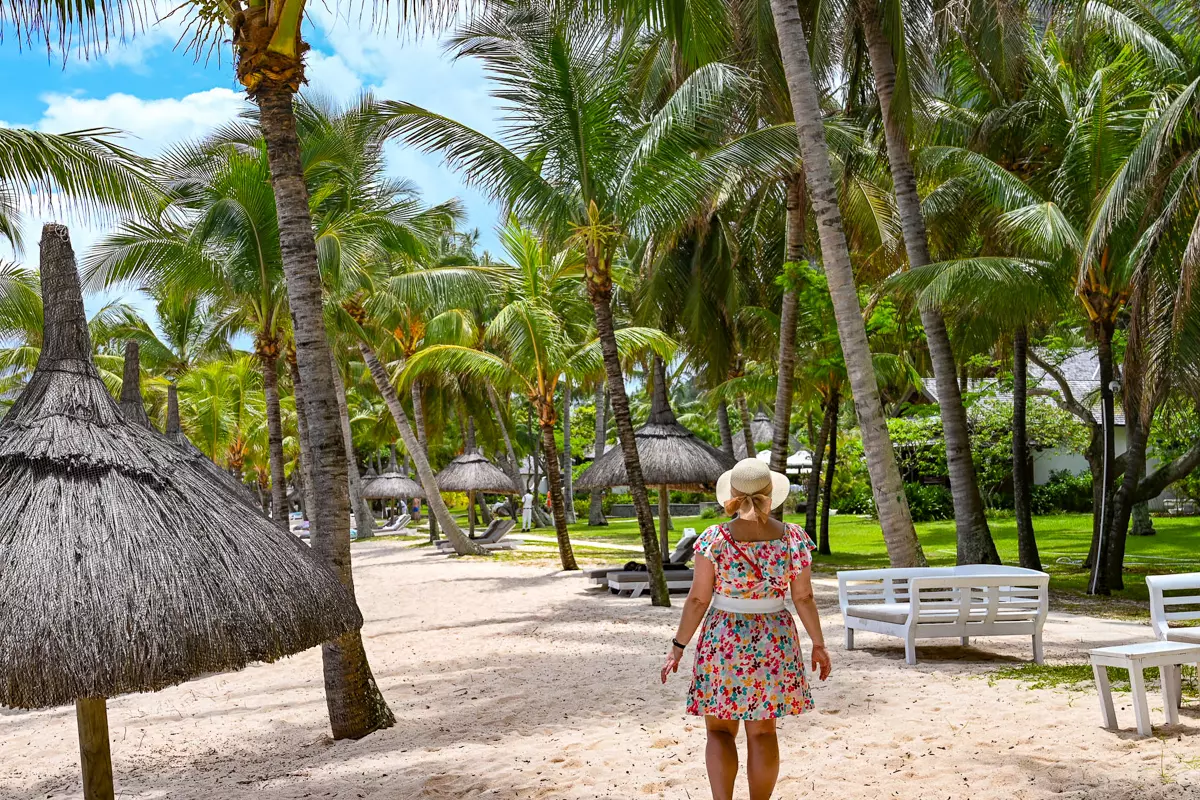Best Time To Visit Mauritius
Planning a trip to Mauritius but not sure when to go? Whether you’re chasing sunshine-filled beach days, cooler hikes through lush nature reserves, or vibrant cultural festivals, timing can make all the difference.
Mauritius enjoys warm weather year-round, but the experience changes dramatically from month to month. From the humid, tropical buzz of summer (November–April) to the calm, breezy winter days (May–October), each season offers something different.
In this guide, I will break down the weather month by month to help you choose the best time for your visit to Mauritius, along with some travel tips and recommendations.

Mauritius Weather & Events by Month
Mauritius In January: Hot, Humid and Full of Energy
January is the heart of the Mauritian summer—hot, humid, and buzzing with tropical life. Average daytime temperatures reach around 27°C, and the Indian Ocean is warm and inviting. If you are planning a tropical holiday, January is one of the best times to visit Mauritius for swimming, snorkeling, and diving.
Keep in mind that short afternoon downpours are common, and there is a small risk of cyclones. However, these are typically brief and followed by sunshine, leaving the landscapes lush and green. For those of you who love nature and do not mind a bit of unpredictability, January offers an energising and unique experience.
Local Tip: Pack a light rain jacket and quick-dry clothing. While tropical showers come and go quickly, you will want to stay comfortable if caught outside.
Cultural highlight: Thaipusam Cavadee
One of the most visually striking Hindu festivals in Mauritius, Thaipusam Cavadee features colourful processions, body piercings, and intense devotional rituals in honour of Lord Mur.
Mauritius In February: Tropical Heat and Cultural Fireworks
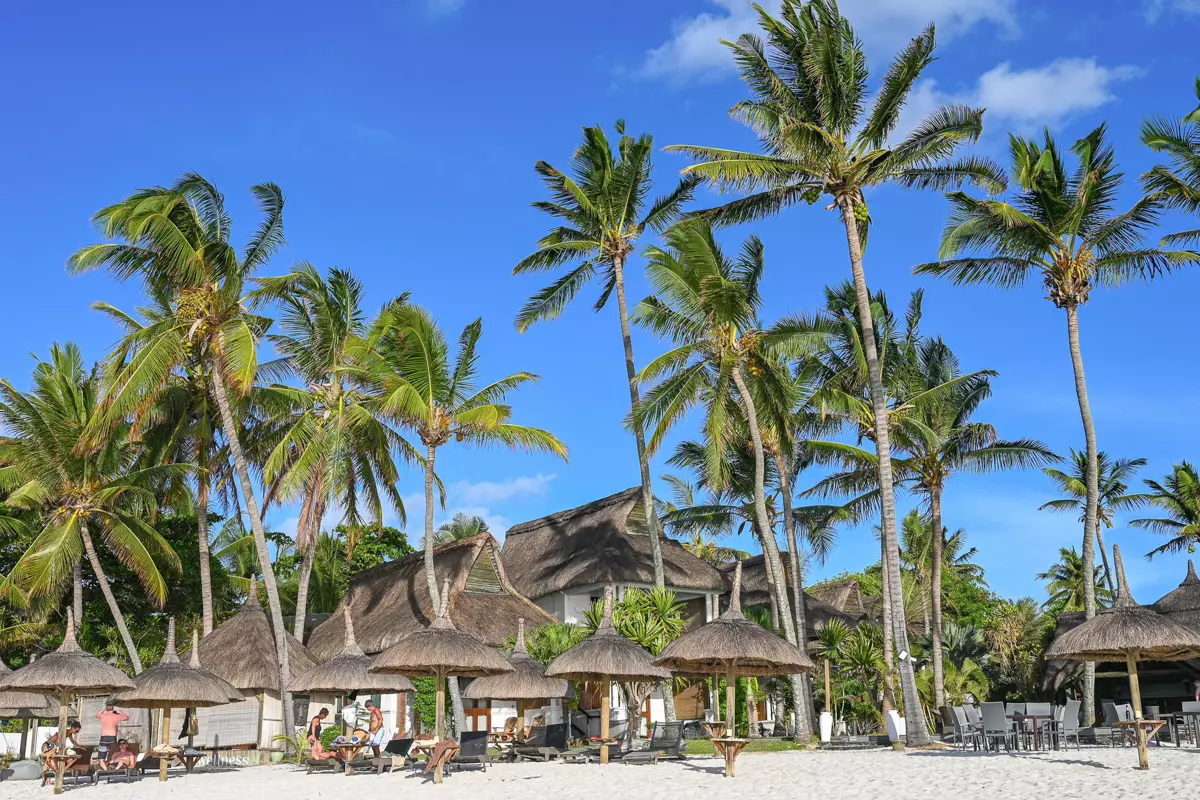
February continues the hot and humid summer in Mauritius, with average temperatures between 26–28°C. Tropical rain is frequent, especially in the afternoons, and this month is known as one of the most cyclone-prone periods. Flexible travel plans are recommended.
Despite the weather, the island stays vibrant and full of life. If you are seeking warmth, fewer tourists, and lush green surroundings, Mauritius in February is a rewarding choice. Accommodation prices may be slightly lower, and the natural scenery is ideal for photography and peaceful beach walks between showers.
Local Tip: Plan your outdoor activities in the morning when skies tend to be clearer. Keep an indoor backup option in mind—local markets or museums are perfect for afternoon exploration.
Cultural highlight: Chinese Spring Festival
Chinatown in Port Louis comes alive during the Chinese Spring Festival, with lion dances, firecrackers, and red lanterns lighting up the streets. The atmosphere is festive, filled with music and food stalls offering authentic Chinese-Mauritian cuisine.
Tip: If you have the chance to attend, do not miss the food—try dumplings, crispy spring rolls, and sesame balls sold by local vendors.
My experience: “During my visit to Mauritius in February, the weather was hot and humid, just as expected. Daytime temperatures reached around 28°C, and there were short, heavy rain showers in the afternoons. The beaches were still great, and I enjoyed exploring the local food scene and cultural spots. Despite the chance of cyclones, I found it to be a good time to visit, especially if you don’t mind a bit of tropical unpredictability.”
Mauritius In March: Softer Skies and Sacred Pilgrimage
In March, the summer heat in Mauritius begins to ease. Rainfall gradually decreases, humidity becomes more manageable, and average temperatures settle around 26°C. For many travellers, this is the ideal moment between the vibrant summer and calmer winter season.
March is particularly appealing for nature lovers. Hiking trails remain lush and green, waterfalls are still flowing, and you will find fewer crowds at popular attractions. It is a great time for outdoor exploration and tranquil sightseeing across the island.
Local Tip: Begin your hikes early in the day to take advantage of the cooler temperatures. Trails in areas like Le Morne or Black River Gorges are especially scenic after the summer rains.
Cultural highlight: Maha Shivaratri
Maha Shivaratri is one of the most important Hindu events in Mauritius. Thousands of pilgrims walk barefoot to Grand Bassin in a peaceful and spiritual procession, with streets filled with chants and offerings to Lord Shiva.
Tip: I recommend witnessing or even walking part of the pilgrimage. Dress modestly, act respectfully, and avoid disturbing religious rituals. Locals appreciate your presence when shown with care and humility.
Mauritius In April: Gentle Weather and Colorful Celebrations
April marks the start of the dry season in Mauritius. With average temperatures around 25°C, clear skies, and lower humidity, it is the perfect time for beach days, scenic drives, and relaxed exploration. The landscapes remain lush from recent rains, adding to the visual charm.
This month offers a balance many travellers appreciate—not too hot, not too rainy, and still relatively quiet before the winter tourist season begins. If you are looking for a peaceful and naturally beautiful getaway, Mauritius in April is a wonderful choice.
Local Tip: Rent a car and explore the island’s interior. Chamarel, tea plantations, or a coastal drive along the east will reward you with hidden beaches and breathtaking scenery.
Cultural highlight: Holi – The Festival of Colors
Holi brings color, joy, and energy to Mauritius. Locals gather to throw brightly coloured powder, dance in the streets, and enjoy traditional sweets in a warm and welcoming atmosphere. It is one of the most joyful Hindu festivals on the island.
Tip: If you are invited to take part, say yes—wear white clothes you do not mind staining and join with a smile. It is festive, messy, and absolutely heartwarming.
Mauritius In May: Mild Weather and Tranquil Exploration
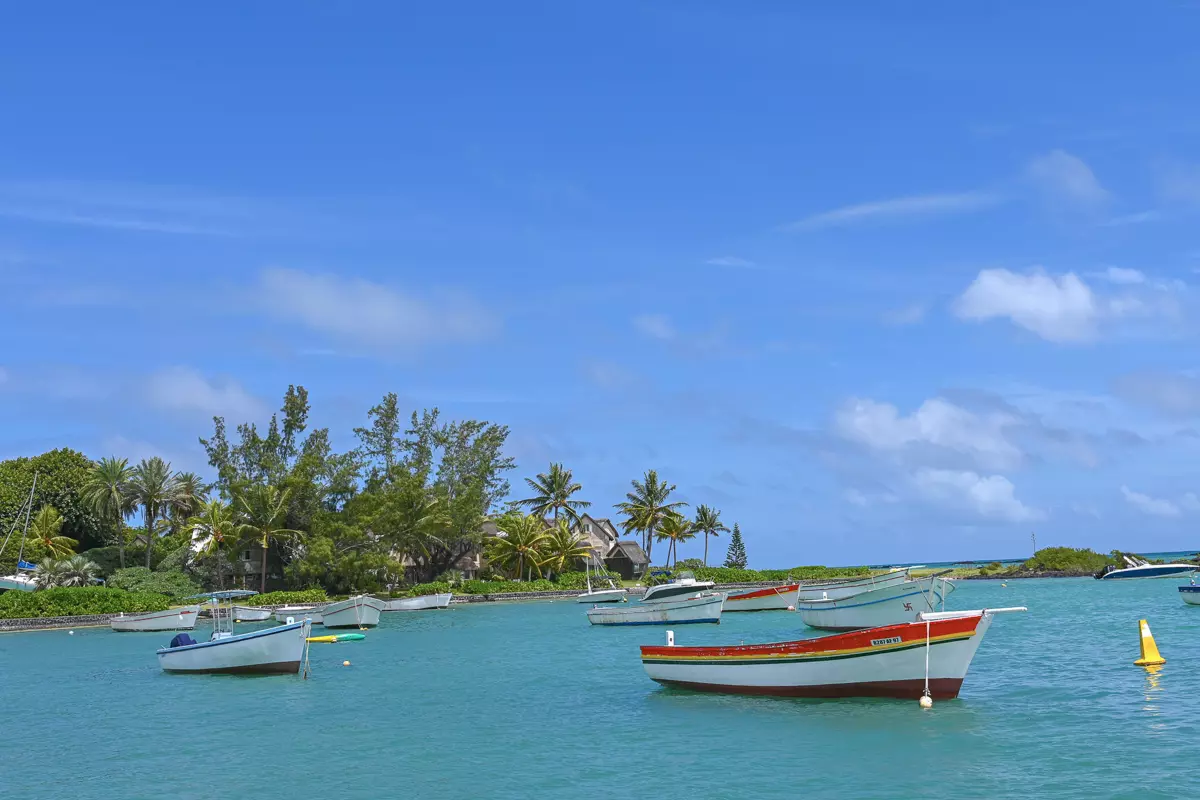
May signals the start of the Mauritian winter season—but do not let the word “winter” mislead you. With average temperatures around 23°C, mostly sunny skies, and lower humidity, it is one of the most comfortable and underrated times to visit Mauritius.
This is an excellent month for active travellers. Hiking trails are dry and accessible, waterfalls are flowing, and the air feels clean and crisp. The beaches, particularly along the north and west coasts, remain warm enough for swimming, with fewer crowds and a calmer atmosphere.
Local Tip: If you enjoy hiking or photography, visit La Vallée de Ferney or Le Pouce Mountain early in the day. You will find incredible light, peaceful surroundings, and fantastic views without the heat of summer.
Cultural highlight: Eid al-Fitr
Eid al-Fitr is celebrated by the Muslim community in Mauritius to mark the end of Ramadan. It is a time of prayer, family gatherings, and festive meals. Although it is not a large public event, towns such as Port Louis and Rose Hill are filled with a warm community spirit.
Mauritius In June: Cool Breezes and Local Vibes
June marks the beginning of true winter in Mauritius. Temperatures average around 22°C, with dry weather and cool trade winds—especially noticeable along the east and south coasts. It is a peaceful time to visit, with fewer tourists and a calm local rhythm.
The ocean may feel a bit cooler, but swimming is still pleasant, especially in protected lagoons. Lower humidity makes it ideal for visiting towns, exploring botanical gardens, and hiking in the island’s mountain regions without discomfort.
Local Tip: Visit the Pamplemousses Botanical Garden or the Sir Seewoosagur Ramgoolam Museum in the morning, then enjoy lunch from a street food vendor in Port Louis—try fish vindaye or gateaux piments for a truly local taste.
Cultural highlight: Ghoon Festival
The Ghoon Festival, observed by the Muslim community, commemorates the martyrdom of Imam Hussain. The event includes solemn processions and symbolic rituals, especially in areas like Plaine Verte.
Mauritius In July: Windy Trails and Wild Landscapes
July is one of the coolest months in Mauritius, with average temperatures around 21°C. While it is not cold by most standards, the southeast trade winds bring a noticeable breeze—especially along the east and south coasts.
This is an excellent time for hiking, nature exploration, and adventure. Stronger winds also make it one of the best months for windsurfing and kiteboarding, particularly in popular spots like Le Morne and Anse La Raie.
Local Tip: If you are planning a coastal hike, bring a windbreaker. The views are breathtaking, but the breeze can be strong—especially in the south. For calmer beach experiences, stick to the north and west coasts.
Cultural highlight: Ganesh Chaturthi
Ganesh Chaturthi celebrates the birth of Lord Ganesha with colourful processions and ceremonial statue immersions in rivers or the sea. Neighbourhoods come alive with music, devotion, and decorative altars.
Tip: Keep an eye out for local celebrations near rivers or coastal towns. These smaller processions are often heartfelt and deeply rooted in family and community spirit.
Mauritius In August: Breezy Days and Local Discoveries
August continues the cool and dry winter pattern in Mauritius. Average temperatures remain around 21°C, and trade winds are still strong—especially along the coastlines. However, skies are usually clear, making this an excellent time for outdoor activities.
It is a peaceful month across the island. Beaches are quieter, hiking conditions are excellent, and the local rhythm is relaxed. If you are interested in cultural experiences, August is a perfect time to explore museums, markets, tea plantations, and historic temples.
Local Tip: Wind sports reach their peak in August. Head to Anse La Raie or Belle Mare if you enjoy kiteboarding or want to take a lesson—conditions are ideal, and the crowds are minimal.
Cultural highlight: Mauritius Shopping Festival
This month-long celebration of retail and local business features discounts, pop-up markets, fashion events, and live entertainment. It is a fun and festive way to explore Mauritian creativity and entrepreneurship.
Tip: Look for locally made products such as rum, vanilla, woven baskets, and artisanal soaps. These make perfect souvenirs and help support small businesses across the island.
Mauritius In September: Spring Awakens

September marks the start of spring in Mauritius. Temperatures begin to rise gently to around 22°C, trade winds settle down, and the island’s lush greenery starts blooming once again. It is an ideal time for relaxed travel, wellness retreats, and romantic escapes.
This is still considered the low tourist season, which means you can enjoy peaceful beaches and tranquil landscapes without crowds. If you are looking for a more intimate way to experience Mauritius, September is a wonderful month to visit.
Local Tip: Head inland to see nature springing back to life. Chamarel, Ebony Forest, or La Vallée de Ferney are especially vibrant in September, with fewer visitors and soft golden light perfect for photos.
Cultural highlight: Père Laval Pilgrimage
On September 9, thousands of Mauritians from all backgrounds take part in the pilgrimage to Blessed Père Laval’s shrine in Sainte-Croix. It is a unique event that brings together faith, tradition, and national unity in a deeply respectful atmosphere.
Tip: Visit the shrine during the day or join the pilgrimage quietly. Locals are often happy to share the story behind this powerful event of spiritual devotion.
Mauritius In October: Sunshine, Warm Seas and Festival Lights
October is considered one of the best months to visit Mauritius. With temperatures around 23–25°C, minimal rainfall, and warm, calm seas, it offers ideal conditions for both beach relaxation and sightseeing across the island.
The holiday crowds have not yet arrived, making October a peaceful yet vibrant time to enjoy Mauritius. Whether you are looking for a romantic getaway, a diving holiday, or a nature-filled escape, this month strikes the perfect balance.
Local Tip: October is excellent for diving and snorkelling. The water clarity is at its peak, and marine life is active. Head to Blue Bay Marine Park or Coin de Mire for some of the best underwater experiences.
Cultural highlight: Diwali – The Festival of Lights
Diwali is one of the most beautiful and widely celebrated festivals in Mauritius. Families decorate their homes with oil lamps, fireworks light up the night sky, and sweet treats are shared with neighbours and guests.
Tip: Take an evening walk through local neighbourhoods to see homes glowing with light. If you are offered sweets by a local family, accept graciously—it is a warm symbol of Mauritian hospitality.
Mauritius In November: Hotter Days, Fewer Crowds
November brings the first real summer heat to Mauritius. Average temperatures climb to 24–26°C, humidity increases, but rainfall remains relatively low. If you are looking for warmth without the holiday-season crowds, this is a great time to visit.
Beaches start getting busier, but early mornings or more remote spots still offer peace and space. The ocean is warm and welcoming, perfect for sunbathing, sailing, or snorkeling in clear lagoons.
Local Tip: Lagoon life returns in full colour during November. It is an ideal time for a catamaran trip, stand-up paddleboarding, or simply soaking in the sun. Use high SPF sunscreen—UV levels are strong.
Cultural highlight: International Creole Festival
The International Creole Festival celebrates the island’s rich Creole culture. Concerts, dance performances, street food fairs, and art exhibitions take place throughout Mauritius, highlighting local creativity and heritage.
Tip: Try local dishes like rougaille, mazavaroo, or octopus curry, and experience the festive vibe at a night concert. It is an immersive, flavourful cultural moment.
Mauritius In December: Tropical Festivities and Summer Energy
December is the height of summer in Mauritius. Temperatures rise to 26–28°C, the air is hot and humid, and a festive atmosphere spreads across the island—from the beaches to churches and nightclubs.
This is one of the most popular months to visit Mauritius. If you are planning a holiday during this time, be sure to book your accommodation and activities well in advance. Although there is a higher chance of rain and potential cyclones, the vibrant energy of the season more than makes up for it.
Local Tip: Celebrate Christmas on the beach—many hotels and restaurants host special festive events. For New Year’s Eve, reserve your dinner table early, as spots fill up weeks in advance.
Cultural highlight: Christmas and New Year’s Eve
Christmas in Mauritius is celebrated under palm trees and fireworks instead of snow. New Year’s Eve parties light up the coastline, especially in Grand Baie and Flic en Flac, with music and dancing until sunrise.
Tip: If you are looking for a more spiritual experience, attend midnight mass in one of the island’s colonial-era churches—it is a peaceful and memorable way to end the year.
Mauritius Climate Breakdown By Month
Average Temperature
For current conditions and seasonal climate data, see AccuWeather.
FAQs About The Best Months To Visit Mauritius
The best time to visit Mauritius is during the cooler, drier months from May to December when the weather is pleasant, and there’s less chance of rain.
Cyclone season in Mauritius typically runs from January to March, but severe cyclones are rare. While it is generally safe to visit, it’s best to monitor weather updates and be prepared for occasional heavy rain.
The hottest months in Mauritius are from December to February, with temperatures reaching up to 32°C. The humidity is also high during this period.
The peak tourist season in Mauritius runs from October to December, when the weather is warm and dry, making it ideal for beach activities and outdoor exploration.
Yes, visiting Mauritius during the off-season (May to September) can be a great option if you want to avoid crowds and enjoy lower prices, though you may experience cooler temperatures.
You can check up-to-date weather trends and seasonal climate data on the Mauritius Meteorological Services website. It provides official forecasts, temperature averages, cyclone alerts, and detailed monthly breakdowns—ideal for planning your trip with confidence.
Book your flight
For the best flight deals, I always rely on Skyscanner. Features like Multi-city and Explore Everywhere help me uncover incredible travel opportunities.
Rent a car
Discovercars is my top choice for comparing car rental prices for any road trip around the world. The booking experience is always smooth and easy.
Travel insurance
SafetyWing provides affordable travel medical insurance with global coverage, perfect for digital nomads and long-term travelers.
Book Tours & Attractions
Experiencing a destination to the fullest is easier with a well-planned itinerary. I use GetYourGuide for guided tours and Tiqets for quick access to museum and amusement park tickets.
Protect yourself online by VPN
No matter where I go, I always use NordVPN for secure browsing and to ensure I can access websites that might be blocked in certain countries.
Disclosure: I only suggest companies that I personally rely on. If you use the affiliate links in my posts to book services, I’ll earn a small commission, with no extra cost to you.
It was a short guide to the best time to visit Mauritius. What month will you choose?
Share on

Hi, I’m Evelina, a travel enthusiast who loves nature, peace, and authentic places. I cherish the freedom to explore and learn with each adventure, whether it’s hiking trails, stunning beaches, natural parks, unique architecture, or rich cultural heritage. I hope my experiences inspire you to embark on your own journeys!
